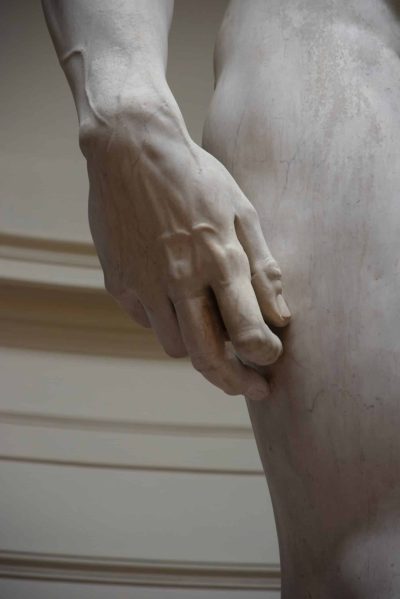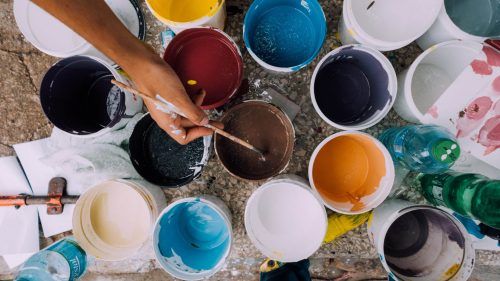Every work of art has a story. Some also bear histories notable enough to bestow significant financial value. Like any appreciating investment, various factors combine to determine how much your painting, drawing, or print might be worth, today or in the future.
For this reason, art appraisers recommend establishing the market value of your original pieces every few years, as you would for your stock portfolio or real estate. If your self-assessment looks promising, you can reach out to a professional to have them formally appraised.
Four factors will help you identify the investment potential of your personal art collection: details about the artist, specifics of the medium, provenance (where the piece has been), and what condition it is in. Read on to learn more about each step.
Step 1: Research the Artist

The artist is the foremost determinant of your artwork’s value. You can gain invaluable knowledge about a piece’s origin, lifespan, and significance by researching its creator. In addition, with auction results publicly available, you can glean a sense of general ballpark values.
Research the artist’s biography and resumé. In particular, note information about any works held in museum collections and the history of the exhibitions they participated in. You may be able to find a list of galleries that represent them and details on auction sales of their other works (or even the very piece you own).
Additionally, if you are unsure of the artwork’s medium, reviewing the artist’s oeuvre will narrow down the mediums used by the artist and will support medium and material identification.
Unsure of the artist? Some signatures are difficult to read, but the reverse image search in Google is a tool for this purpose. Take a photo of the signature and upload it to the search engine. If the artist is well-known, Google should be able to match the scrawl to the name.
If you cannot find any information on the artist, this unfortunately means that the artwork will be difficult to value, both in terms of aesthetic and art historical value, and also in relation to monetary value since no sales histories can be identified.
Step 2: Determine the Medium

The next important piece in your evaluation puzzle is the medium—the materials used by the artist in the creation of the work. The most common mediums are paintings, prints, works on paper (including gouache, pastel, watercolour, ink, charcoal, and pencil), sculpture, mixed media, photography, video, and, increasingly, digital and NFTs.
First, establish the main medium category; if it is a 2D work, ascertain whether the artist used paint, ink, pencil, or pastel, for instance. If the artwork in question is a painting, you can next determine what type of paint the artist used.
For example, paintings created earlier than the mid-19th century are likely to be oil or watercolour, rather than acrylics. Fine cracks around an older painting can also indicate oil paint. Visually, acrylic does not blend as readily as the other mediums, so the division between colours is more likely to be crisp; they will also appear a bit more vibrant, while oils have more muted tones.
Next, determine the surface upon which the artwork was created. If the work is behind glass, it is likely to be on paper. Otherwise, touch the surface gently with a fingertip. If it has some give, it is likely a stretched canvas or linen. If it is firm, it was probably painted on wood. Any visible texture behind the paint can help you make this distinction, as well.
While the medium will not reveal the value of the artwork in and of itself, it will provide you and the appraiser with useful information on the artist’s preference and the period in which it was created.
Step 3: Learn About its Provenance

Next, find out what you can about your artwork’s provenance or the history of its ownership. This lineage is a powerful research tool because it helps to establish authenticity and justify value. Gaps and holes in provenance may indicate theft or forgery. Any kind of documentation or paper trail relating to its acquisition is gold – a purchase invoice from a gallery or auction house can go a long way to verify the work’s legitimacy.
Tracing the journey of the artwork from when it left the artist’s studio to the moment you acquired it lends weight to its valuation. Provenance tells the appraiser and potential buyers who has owned the piece in the past—a famous collector is a boon to any artwork’s value—and can also reveal its past inclusion in other collections of note.
Step 4: Consider the Condition

An artwork by a well-established or historically significant artist can be negatively impacted by untreated damage, so the final step is to determine and document any wear and tear on your art.
If possible, remove the artwork from its frame and look for holes, nicks, or abrasions on the work. Examine the piece for fading from sunlight or water damage, as well. Since the art is out of its frame, this is also a good time to look for the artist’s signature or inscription, which may be on the front or back (or bottom) of the piece.
Age and wear and tear do not diminish the value of a historical work – this “proof of life” is to be expected with an artwork of vintage. Indeed, old materials can demonstrate the authenticity of a work. In most cases, most damage and condition issues can be repaired and resolved by conservators, bringing the artwork’s value to its full potential.
Assessing your own art is crucial to your empowerment as a collector and it can be intriguing detective work! Once you have explored the artist, medium, provenance, and condition— the more the owner knows, the better— reach out to a professional appraiser to find out the current market value of your aesthetic investments.
ArtRow is partnered with the International Society of Appraisers. Contact us to organize an arm’s length professional fine art appraisal.



